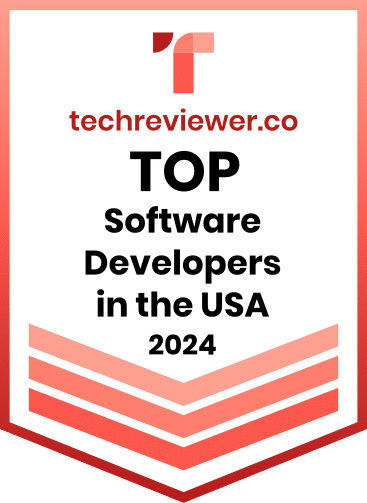Would Voice-Coding be the Next Evolution in Software Development?

Yes, voice stands ready to become the next major frontier in software development. In recent years, voice experiences changed how people search, interact, and complete tasks. With voice controlled chatbots, smart assistants, and voice enabled devices, the world entered a new era of hands-free digital engagement. Thanks to voice recognition and AI technologies, users started imagining life without keyboards or touch inputs.
Voice controlled systems like Apple Siri and Amazon Echo grew rapidly because users enjoyed convenience. Interest expanded as voice assistants entered cars through BMW Intelligent Personal Assistant, Amazon Echo Auto, Apple CarPlay, and Google Android Auto. Today, many industries use voice biometrics for authentication. Each shift signals rising expectations for voice first interaction. As a result, voice driven coding gained attention as a potential step forward.
Developers also feel the impact in a different way. Many software engineers face repetitive strain injuries from typing and mouse use. Voice driven coding can reduce this strain and offer a new method for writing software. In addition, voice coding opens the door for more people to join tech careers, including individuals with disabilities or mobility limitations. Accessibility improves, and the software industry becomes more inclusive.
The concept remains simple. You speak instructions in natural language, and AI systems generate code from those instructions. To make this work, two components matter: a speech recognition engine and a voice coding platform. In many cases, developers also prefer a high-quality microphone setup to minimize external noise.
Real World Examples
Dragon by Nuance serves as a notable speech recognition engine example. It runs on Windows and Mac systems and is known for precision in transcription. On the coding side, platforms like VoiceCode, Talon, and Aenea support voice-based programming. VoiceCode and Talon run on Mac OS, while Aenea works on Linux and allows remote use of Dragon NaturallySpeaking voice macros.
However, voice coding platforms differ from mainstream assistants such as Siri. They do not interpret natural phrases loosely. Instead, they require commands to match predefined action patterns. This approach increases accuracy when writing code, since precision matters more than conversational freedom.
Another difference appears in continuous recognition. Traditional voice assistants ask you to speak a command, pause, and wait for response. In contrast, voice coding tools operate without constant pausing. Developers speak command after command in a steady flow. VoiceCode even uses vocabulary that does not resemble normal English to prevent confusion during coding. Meanwhile, Talon and Aenea use dynamic grammar which updates based on active applications. Because of this, developers can speak commands that feel closer to everyday language.
Talon also brings unique control options. It can track eye movements to move the pointer and detect lip pops for clicks. This gives users an alternative to physical mouse actions.
More Voice to Code Systems
Beyond command-based platforms, newer solutions convert spoken logic into syntactically correct code. Serenade represents one of the most recognized options. It uses a coding focused speech engine instead of a general conversational tone. When developers speak code, Serenade interprets the instruction and writes the syntax. It integrates with popular IDEs like Visual Studio Code and IntelliJ IDEA. Users install the app, activate it, and begin instructing it through precise commands. Many platforms include visual assistants to help users learn faster.
Salesforce also explores this direction with CodeGen. According to public discussions, the system uses a large autoregressive model trained on significant code data. It aims to support experienced developers and non-coders by converting intent into structured code. While still early, research indicates interest in natural voice programming as a future skill and capability.
Voice Coding as a Software Evolution Stage
Voice coding remains young, but momentum builds. Adoption depends on how quickly engineers embrace new tools and move beyond traditional keyboard and mouse input. As more AI advances arrive, voice-based commands may evolve into mixed input coding environments. Eventually, ideas like brain computer interfaces could emerge, where thoughts translate directly into code.
Still, voice driven development already shows potential benefits. New developers enter the field more easily. They speak logic instead of memorizing syntax immediately. Experienced engineers with RSI pain stay productive longer. Teams collaborate in new ways. Accessibility becomes a measurable advantage rather than a discussion point.
As technology improves, voice coding may combine with machine learning that completes logical steps automatically. If developers describe logic clearly, systems can convert those concepts into working functions. This does not remove the value of engineering expertise. Instead, it amplifies creativity and shifts focus to architecture, design, and problem solving.
However, widespread adoption still depends on demand, accuracy, comfort level, and trust. Some engineers feel faster typing remains the most efficient method. Others explore hybrid workflows. Over time, voice coding may grow in environments where hands free productivity matters most, such as automotive systems, medical settings, accessibility environments, smart manufacturing, and remote field operations.
Advantages of Voice Driven Development
- Improved accessibility for developers with physical limitations
- Reduced strain from long hours of typing
- Faster code scaffolding for simple instructions
- Hands free control for complex environments
- Enhanced collaboration when speaking logic with teams
Realistic Considerations
Even though interest grows, engineers will still balance benefits and challenges. Voice coding requires silence or controlled noise conditions. Developers must learn command patterns and tune microphones for accuracy. Additionally, some coding tasks still feel more intuitive through typing. However, these limitations look like normal early-stage technology hurdles. Tools will evolve and accuracy will improve.
Conclusion
Voice driven development signals an exciting new direction for software engineering. It blends human intent, natural language, and machine assistance into a new programming experience. While adoption will not happen overnight, early innovation shows meaningful promise. Voice based workflows can support accessibility, improve comfort, and expand entry pathways for future developers.
When you explore advanced technology and voice-based automation for your business, you position your company ahead of shifting trends. If you want to build a voice enabled system, enhance workflows, or explore AI driven development for your organization, reach out to Cloudester Software. A personalized strategy can help you adopt voice features at the right pace and in the right way for your business model.









